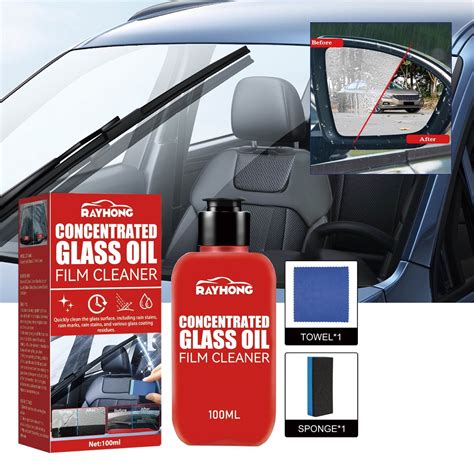How To Protect Glass From Scratches: A Comprehensive Guide
What are the Best Ways to Prevent Scratches on Glass Surfaces?
Glass is a beautiful and versatile material used in various applications, from windows and mirrors to tabletops and smartphone screens. However, glass is susceptible to scratches, which can detract from its appearance and functionality. Protecting glass from scratches is essential to maintain its beauty and longevity. Here are some of the best ways to prevent scratches on glass surfaces:
Regular Cleaning and Maintenance
The first line of defense against scratches is regular cleaning and maintenance. Dust, dirt, and debris can act as abrasive particles, causing scratches when rubbed against the glass. Here’s how to properly clean your glass surfaces:
- Use a microfiber cloth: Microfiber cloths are soft and absorbent, making them ideal for cleaning glass without scratching.
- Avoid harsh chemicals: Harsh chemicals, such as ammonia-based cleaners, can damage the protective coatings on glass, making it more prone to scratches.
- Clean regularly: Make it a habit to clean your glass surfaces regularly, at least once a week. This will prevent dust and dirt from accumulating and causing scratches.
Protective Coatings
Applying a protective coating to your glass surfaces can create a barrier against scratches. Here are some common options:
- Glass sealant: Glass sealants are liquid solutions that form a protective layer on the glass surface. They can be applied with a microfiber cloth or spray bottle.
- Tempered glass: Tempered glass is heat-treated to make it stronger and more resistant to scratches. It’s commonly used for smartphone screens and tabletops.
- Scratch-resistant coatings: These coatings are applied at the factory level and provide extra protection against scratches. They are commonly used on high-end smartphones and other devices.
Handling Precautions
Proper handling is crucial to prevent scratches. Avoid placing sharp objects, abrasive materials, or rough surfaces directly on the glass. When moving glass objects, be careful not to bump them against walls or furniture.
Avoid Abrasive Cleaning Tools
Avoid using abrasive cleaning tools, such as steel wool, scouring pads, or abrasive sponges, on your glass surfaces. These tools can leave scratches on the glass, even with minimal pressure.
Store Glass Carefully
When storing glass objects, it’s essential to protect them from scratches. Consider using soft, protective materials like bubble wrap, foam, or cloth to wrap and cushion the glass. Store them in a clean, dry environment free from dust and debris.
By following these tips, you can significantly reduce the risk of scratches on your glass surfaces, ensuring they remain beautiful and functional for years to come.
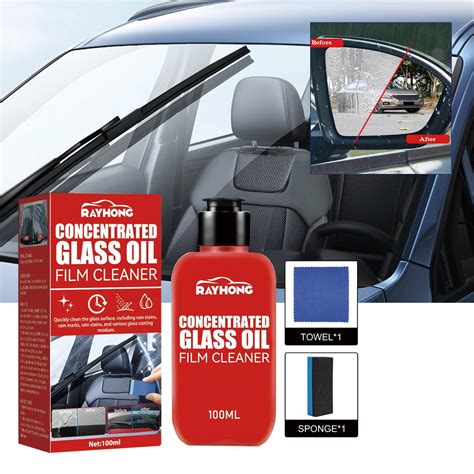
How Can I Remove Scratches from Glass?
While prevention is always the best approach, scratches on glass can happen. Thankfully, there are several methods to remove or minimize scratches, depending on their severity and the type of glass.
Polishing
For minor scratches, polishing can often remove them. This involves using a fine-grit abrasive compound and a polishing cloth to smooth out the scratch.
- Use a polishing compound: Choose a polishing compound designed specifically for glass. Avoid abrasive compounds meant for metal, as they can damage the glass.
- Apply in a circular motion: Apply the polishing compound to the scratch in a circular motion, using gentle pressure.
- Rinse and repeat: Rinse the area with water and repeat the process if necessary.
Sanding
For deeper scratches, sanding may be necessary. This involves using fine-grit sandpaper to gradually remove the scratch.
- Use a fine-grit sandpaper: Start with a fine-grit sandpaper, like 400-grit, and gradually increase the grit if needed. Avoid using coarse sandpaper, as it can damage the glass surface.
- Sand in a circular motion: Sand the scratch in a circular motion, applying gentle pressure.
- Rinse and repeat: Rinse the area with water and repeat the process with a finer grit sandpaper until the scratch is minimized.
Glass Repair Kits
Commercial glass repair kits are available to address scratches on glass. These kits often contain a resin that fills in the scratch and hardens, making it less noticeable.
- Follow the instructions carefully: Each kit has specific instructions; carefully follow them for optimal results.
- Clean the area thoroughly: Before applying the resin, ensure the scratched area is clean and free of debris.
- Apply the resin evenly: Apply the resin evenly to the scratch, ensuring it covers the entire length.
- Allow the resin to dry: Let the resin dry completely before handling the glass surface.
Note that these methods may not completely remove deep scratches. It’s essential to consider the severity of the scratch and the type of glass before attempting any repair.
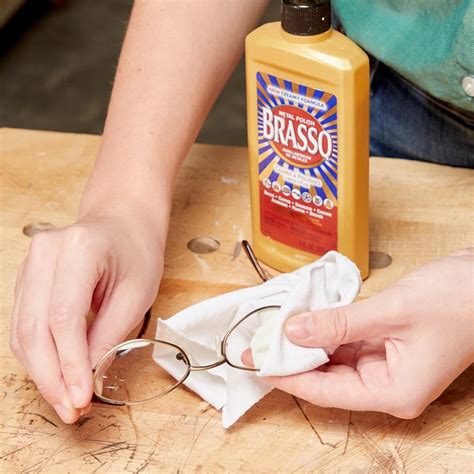
How to Protect Glass From Scratches During Installation?
Installing glass surfaces, whether it’s windows, doors, or shower enclosures, requires careful handling to prevent scratches. Here are some key steps to ensure your glass surfaces are protected during installation:
Protect Glass During Transport
Always use proper packaging and protective materials when transporting glass panels. This minimizes the risk of scratches or breakage during transit.
- Use protective wrapping: Wrap the glass panels in bubble wrap, foam, or cloth to provide cushioning and protect them from impact.
- Secure the panels: Secure the glass panels using straps or ropes to prevent them from shifting during transport.
- Avoid sharp corners: Ensure the glass panels are not exposed to sharp corners or edges during transport.
Use Proper Tools and Techniques
Using the right tools and techniques during installation is crucial to protect the glass from scratches. Use soft-tipped tools and avoid dragging heavy objects directly on the glass surface.
- Use soft-tipped tools: Employ soft-tipped screwdrivers, pliers, and other tools to avoid scratching the glass.
- Use protective pads: Place protective pads or coverings on the glass surface when using tools or handling heavy objects.
- Avoid direct contact: Whenever possible, avoid direct contact between tools and the glass surface.
Clean the Installation Area
Before installing the glass, clean the installation area thoroughly to remove dust, dirt, and debris. These particles can scratch the glass surface during installation.
Use Protective Film
Consider applying a protective film to the glass surface during installation. This film acts as a temporary barrier, shielding the glass from scratches and other damage.
By following these tips, you can ensure your glass surfaces are protected during installation, minimizing the risk of scratches and ensuring a beautiful and functional final product.
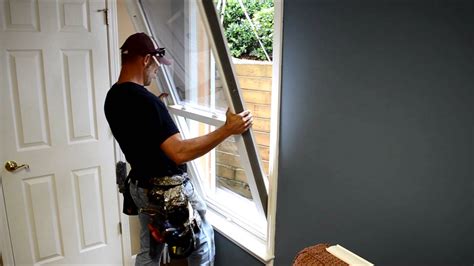
How to Protect Glass From Scratches Due to Weather?
Weather elements, such as wind, rain, and dust, can contribute to scratches on glass surfaces, especially in exposed areas. Here are some tips to protect your glass from weather-related scratches:
Use Window Screens
Window screens can act as a physical barrier, preventing debris from directly hitting the glass surface.
Clean Regularly
Regular cleaning helps remove dust and dirt that can act as abrasive particles, causing scratches when blown by wind or carried by rain.
Consider a Protective Coating
Applying a protective coating, such as glass sealant, can create a barrier against abrasive particles and weather-related damage.
Protect From Hail
Hail can cause significant damage to glass, including scratches. In areas prone to hailstorms, consider installing storm shutters or using protective covers to shield the glass.
Use Windbreaks
Windbreaks, such as fences, hedges, or trees, can help reduce the wind’s impact on your windows, minimizing the chances of debris causing scratches.
By taking these precautions, you can effectively protect your glass surfaces from weather-related scratches, ensuring they remain in pristine condition for years to come.
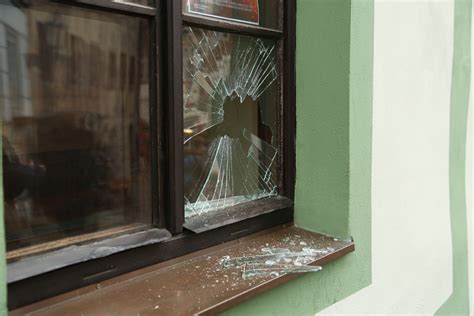
What are the Best Glass Cleaners for Preventing Scratches?
While all glass cleaners are designed to clean glass, some are formulated to be gentler on the glass surface and less likely to cause scratches. Here are some of the best glass cleaners for preventing scratches:
Microfiber Cloth and Water
The simplest and most effective way to clean glass without scratching it is by using a microfiber cloth and water.
Distilled Water and White Vinegar
A mixture of distilled water and white vinegar is a natural and effective glass cleaner that is gentle on the glass surface.
Commercial Glass Cleaners
Many commercial glass cleaners are available, but choose those specifically designed for glass and free from harsh chemicals that can damage the protective coatings on glass.
Avoid Abrasive Cleaners
Avoid abrasive cleaners, such as those containing ammonia or strong acids, as they can damage the glass surface and make it more prone to scratches.
Use Soft Microfiber Cloths
Always use soft microfiber cloths to clean glass. Avoid using paper towels or other abrasive materials, as they can scratch the glass surface.
By choosing the right glass cleaners and cleaning methods, you can help maintain the beauty and longevity of your glass surfaces while minimizing the risk of scratches.
How to Protect Glass From Scratches on a Car?
Car windows are particularly susceptible to scratches due to their exposure to environmental elements and daily wear and tear. Here are some tips to protect your car’s glass from scratches:
Regular Cleaning
Clean your car’s windows regularly to remove dust, dirt, and debris that can cause scratches when rubbed against the glass.
Use a Microfiber Cloth
Always use a soft microfiber cloth to clean your car windows. Avoid using paper towels or other abrasive materials, as they can scratch the glass.
Avoid Abrasive Cleaners
Avoid using abrasive cleaners, such as those containing ammonia or strong acids, as they can damage the protective coatings on your car’s windows, making them more prone to scratches.
Use a Car Wax
Applying a car wax to your car’s windows can create a protective layer that helps prevent scratches.
Use a Windshield Protector
A windshield protector, such as a clear film, can help protect your car’s windshield from scratches and other damage caused by debris and rocks.
Park Wisely
Park your car in a garage or under a cover whenever possible to protect your car’s windows from the elements.
Be Mindful of Scratches
Be mindful of potential sources of scratches, such as tree branches, car washes, or cleaning tools.
By following these tips, you can help maintain the pristine condition of your car’s windows, ensuring clear visibility and a beautiful exterior for years to come.
How Can I Protect Glass From Scratches When Using a Glass Cutter?
Glass cutters are essential tools for working with glass, but they can also cause scratches if not used properly. Here are some tips to protect your glass from scratches when using a glass cutter:
Use a Sharp Cutter
Always use a sharp glass cutter. A dull cutter will require more pressure, increasing the risk of scratches and chipping.
Score the Glass Properly
Score the glass with a single, firm stroke. Multiple passes will increase the risk of scratches and chipping.
Apply Consistent Pressure
Apply consistent pressure to the cutter throughout the score. Uneven pressure can cause uneven scores and scratches.
Use a Cutting Mat
Use a cutting mat to protect the glass from scratches during cutting. The mat provides a soft surface that absorbs the force of the cutter.
Lubricate the Cutter
Lubricate the cutter with oil or water to reduce friction and prevent scratches. It’s also helpful to apply a light amount of mineral oil or kerosene to the cutting wheel for smoother cutting.
Break the Glass Carefully
Break the glass along the score line using a gentle snapping motion. Avoid twisting or bending the glass, as this can cause scratches and chipping.
By following these tips, you can use a glass cutter to create precise cuts without scratching your glass, ensuring a clean and professional finish.
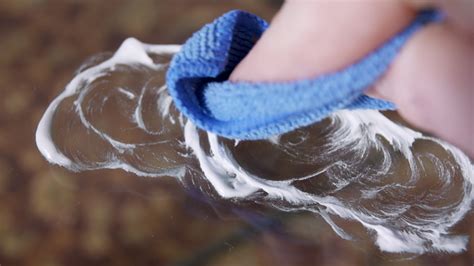
What are the Best Ways to Protect Glass From Scratches in the Kitchen?
Kitchen countertops and tabletops are frequently exposed to scratches, especially when handling knives, utensils, and other kitchen tools. Here are some tips to protect your kitchen glass surfaces from scratches:
Use Cutting Boards
Always use cutting boards to protect your glass countertops and tabletops from scratches caused by knives.
Use Placemats
Use placemats to protect your glass tabletops from scratches caused by dishes and utensils.
Handle Pots and Pans Carefully
Be careful when handling hot pots and pans on your glass countertops or tabletops. Use trivets or pot holders to prevent scratches and heat damage.
Clean Regularly
Clean your glass surfaces regularly to remove dust, dirt, and food particles that can act as abrasive particles, causing scratches when rubbed against the glass.
Use Protective Covers
Consider using protective covers, such as tablecloths or runners, to safeguard your glass countertops and tabletops from scratches.
Avoid Harsh Chemicals
Avoid using harsh chemicals, such as abrasive cleaners or bleach, on your glass surfaces, as they can damage the protective coatings and make them more prone to scratches.
By following these tips, you can protect your kitchen glass surfaces from scratches, ensuring they remain beautiful and functional for years to come.
How to Protect Glass From Scratches on a Phone Screen?
Smartphone screens are highly susceptible to scratches due to their constant exposure to keys, coins, and other objects in our pockets and bags. Here are some tips to protect your phone screen from scratches:
Use a Screen Protector
A screen protector is the most effective way to prevent scratches on your phone screen. These protectors are made from tempered glass or a durable plastic film, creating a barrier between your phone’s screen and the outside world.
Keep Your Phone in a Case
A phone case provides an additional layer of protection against scratches and other damage. Choose a case with a raised lip around the screen to prevent direct contact between the screen and surfaces.
Avoid Placing Your Phone on Rough Surfaces
Avoid placing your phone on rough surfaces, such as a table with sharp edges or a bag with a zipper that could scratch the screen.
Clean Your Phone Regularly
Clean your phone screen regularly to remove dust, dirt, and debris that can cause scratches.
Handle Your Phone Carefully
Be mindful of how you handle your phone. Avoid placing it in your pocket with keys or other sharp objects, and avoid dropping it.
Consider a Scratch-Resistant Coating
Some smartphones come with a scratch-resistant coating applied to the screen. If your phone doesn’t have this feature, consider having a scratch-resistant coating applied professionally.
By taking these precautions, you can keep your phone screen looking pristine and free from scratches, ensuring a clear and enjoyable viewing experience for years to come.
Table Summarizing Information
| Category | Methods to Prevent Scratches |
|---|---|
| Regular Cleaning and Maintenance | Use a microfiber cloth, avoid harsh chemicals, clean regularly. |
| Protective Coatings | Glass sealant, tempered glass, scratch-resistant coatings. |
| Handling Precautions | Avoid placing sharp objects or abrasive materials on the glass, handle with care. |
| Installation Protection | Use proper packaging, soft-tipped tools, clean the area, protective film. |
| Weather Protection | Window screens, regular cleaning, protective coating, hail protection, windbreaks. |
| Glass Cleaners | Microfiber cloth and water, distilled water and white vinegar, commercial glass cleaners, avoid abrasive cleaners. |
| Car Glass Protection | Regular cleaning, microfiber cloth, avoid abrasive cleaners, car wax, windshield protector, park wisely. |
| Glass Cutter Protection | Use a sharp cutter, score properly, consistent pressure, cutting mat, lubrication. |
| Kitchen Glass Protection | Cutting boards, placemats, handle pots and pans carefully, regular cleaning, protective covers, avoid harsh chemicals. |
| Phone Screen Protection | Screen protector, phone case, avoid rough surfaces, regular cleaning, handle carefully, scratch-resistant coating. |
Frequently Asked Questions (FAQs)
What is the best way to prevent scratches on glass surfaces?
The best way to prevent scratches on glass surfaces is a combination of methods, including regular cleaning with a microfiber cloth and a gentle cleaner, applying a protective coating like a glass sealant, handling the glass carefully, and using appropriate tools and techniques during installation.
How can I remove scratches from glass?
You can remove scratches from glass by polishing them with a fine-grit polishing compound or sanding them with fine-grit sandpaper. Glass repair kits are also available, which use a resin to fill in scratches and make them less noticeable.
What should I consider when choosing a glass cleaner?
When choosing a glass cleaner, look for one specifically designed for glass and free from harsh chemicals that can damage the protective coatings. Avoid abrasive cleaners that can scratch the glass surface.
Can I use a regular cleaning cloth to clean glass?
It’s not recommended to use a regular cleaning cloth to clean glass, as they can leave lint and debris on the surface, which can scratch the glass.
Are all glass cleaners the same?
No, all glass cleaners are not the same. Some are formulated to be more gentle on the glass surface, while others may contain abrasive ingredients that can cause scratches.
How can I prevent scratches on my car’s windshield?
You can protect your car’s windshield from scratches by cleaning it regularly with a microfiber cloth, avoiding abrasive cleaners, applying a car wax, using a windshield protector, and parking your car in a garage or under a cover whenever possible.
What is the best way to protect glass from scratches during installation?
To protect glass from scratches during installation, use proper packaging and protective materials during transport, use soft-tipped tools and protective pads, clean the installation area thoroughly, and consider applying a protective film to the glass surface.

